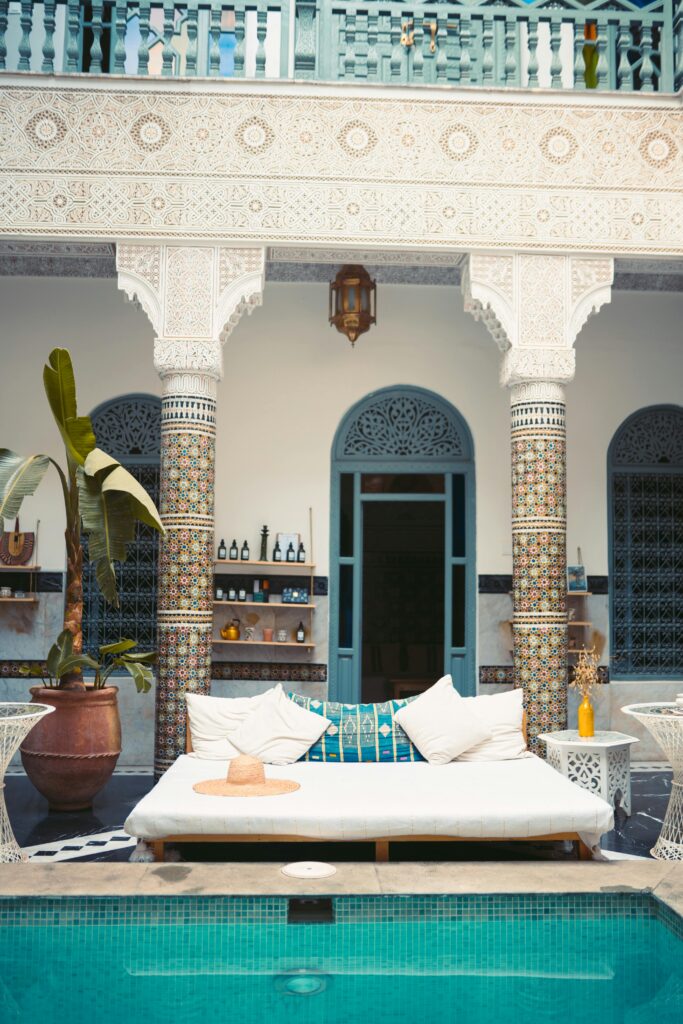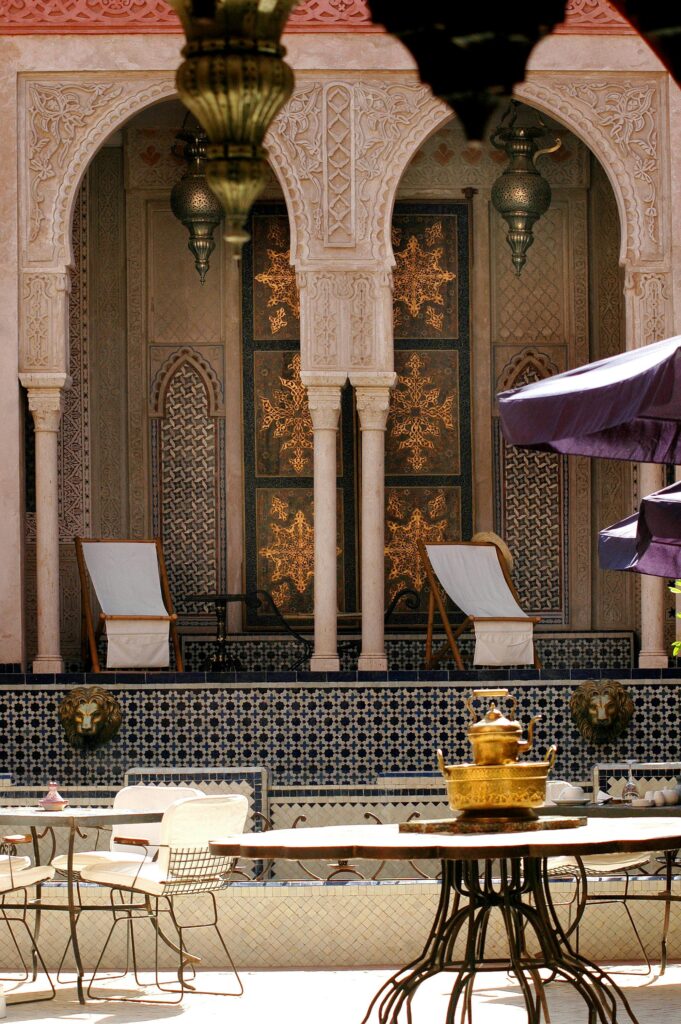From Fes artisans to modern design, Zellige tilework remains Morocco’s most enduring art. Learn how these hand-cut mosaics create mesmerizing patterns that tell stories in color and geometry.

A Childhood Wrapped in Mosaic Dreams
I remember the first time I noticed Zellige. It was not just a quick look, but I let it fill my mind. I was seven years old, walking behind my grandfather in the winding streets of Fes. We stopped at an old fountain that had been there for many years. The bright midday sun hit the tiles perfectly, and the cobalt blue and emerald green tiles glimmered like a dream.
“This,” my grandfather said, gently touching the shapes, “is the writing of Morocco.”
That moment stays with me. Zellige is more than tilework. It is a part of our history, the skill of our ancestors, and a love letter made with clay and glaze.
The Alchemy of Zellige: How Earth Becomes Art
Walk into any Zellige workshop in Fes or Marrakech, and you’ll see something amazing. Here’s how regular clay changes into something special:
- The Clay’s Journey – Craftsmen take reddish clay from city edges. They mix it like dough and press it into molds.
- Sun-Dried Patience – The tiles dry in the Moroccan sun before they get their first baking. This practice has not changed for a thousand years.
- The Maâlem’s Chisel – Using a small hammer called a menqach, masters shape each tile into forms—stars, crosses, diamonds—just by looking. There are no stencils or machines. It relies on years of practice.
- The Glaze’s Secret – Cobalt gives blue, copper makes green, and iron provides red. These are not artificial dyes but crushed minerals mixed with water and a touch of tradition.
- The Final Dance – Like putting together an old puzzle, artisans place each piece carefully. They create patterns so detailed they seem alive.
The Hidden Language of Patterns
My grandmother once said that Zellige talks in symbols.
- Eight-Pointed Stars – A reference to the sky, the endlessness, and how all of life is connected.
- Interwoven Hexagons – A symbol of harmony, just like the honeycombs found in our Sahara oases.
- Nature Designs – A lavish thing not allowed in mosques, so artists added natural shapes into patterns through abstract design.
- Knotwork & Endless Loops – A sign of forever and the strong bond between our past and future generations.
In the Ben Youssef Madrasa, I spent an hour feeling a single wall with my fingers. I counted more than 300 different tile types in just one section. That isn’t just decoration; it shows true devotion.
Where Zellige Whispers Its Loudest
1. Fes: The Beating Heart
- Al-Qarawiyyin Library – This is the oldest library still in use today. Here, beautiful 14th-century tiles shine brightly under the arched ceilings.
- Dar Batha Museum – This museum has a courtyard that changes its colors. It glows golden at sunrise and turns to deep blue at twilight.
2. Marrakech: The Golden Canvas
- El Badi Palace – Even though it is in ruins now, the remains show how Saadian sultans used Zellige to show their power.
- Secret Riads – Places like Riad BE Marrakech keep the craft going with modern updates on classic designs.
3. The Underrated Gems
- Chellah, Rabat – A place where Roman ruins mix with Merinid tiles in a beautifully mysterious way.
- Moulay Ismail’s Tomb, Meknes – A green-tiled refuge that not many tourists discover.
The Crisis No One Talks About
Last year, I went back to Haj Mohammed’s workshop in Fes. Once, there were ten artisans working there. Now, only three are left.
“The young ones?” He shrugged. “They want jobs that pay in euros, not in pride.”
The threats are real:
- Plastic Imports – Cheap, factory-made tiles from Spain and China fill our markets.
- Dying Knowledge – Out of the 100+ traditional Zellige patterns, less than 40 are still produced today.
- Tourist Trinkets – Mass-made “Moroccan-style” tiles weaken the art’s spirit.
Yet hope remains. Places like Atelier Naji in Fes teach new generations. At the same time, designers like Zineb Joutey combine Zellige with modern art.

How to Experience Zellige Like a Moroccan
- Touch the Walls – In Morocco, Zellige has baraka (blessing). Run your hands over the tiles in the Bou Inania Madrasa and feel the energy.
- Take a Workshop – Maison Zellige in Marrakech lets you try chiseling tiles. (Spoiler: It’s harder than it seems.)
- Eat on It – Book a table at Le Jardin in Marrakech. Your tajine will sit on a Zellige table that is older than your great-grandparents.
- Sleep Surrounded by It – Riads like Riad Fes surround you with Zellige dreams, from bed to breakfast.
Your Turn: Keep the Story Alive
Next time you see Zellige—whether in a palace in Marrakech or a shop in Paris—stop for a moment. Think about the hands that made it, the eyes that created it, and the culture it holds.
If you go to Morocco, don’t buy souvenirs made in factories. Look for small shops instead. Hear the stories of the Maâlems (Artisans). Helping them keeps an old tradition going—one tile, one pattern, and one craftsman at a time.
Tell me in the comments: Where has Zellige taken your breath away? A quiet spot in Fes? A courtyard in a riad? I will share more secret places if you let me know!
